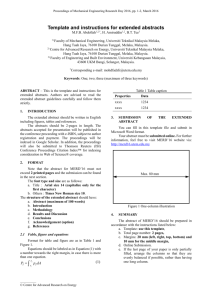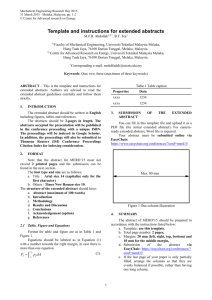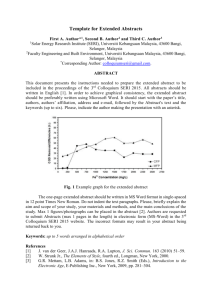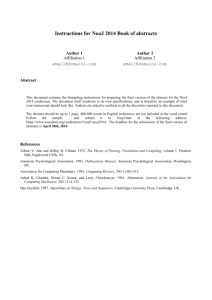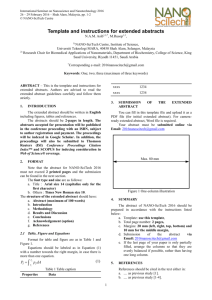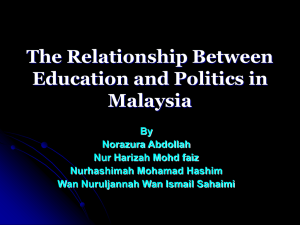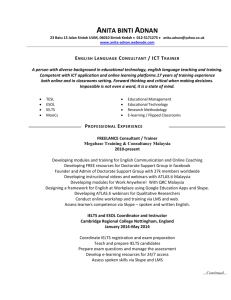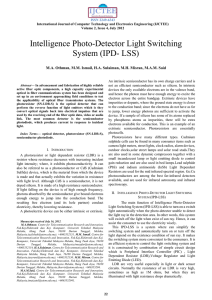template for extended abstract - MITC2015
advertisement
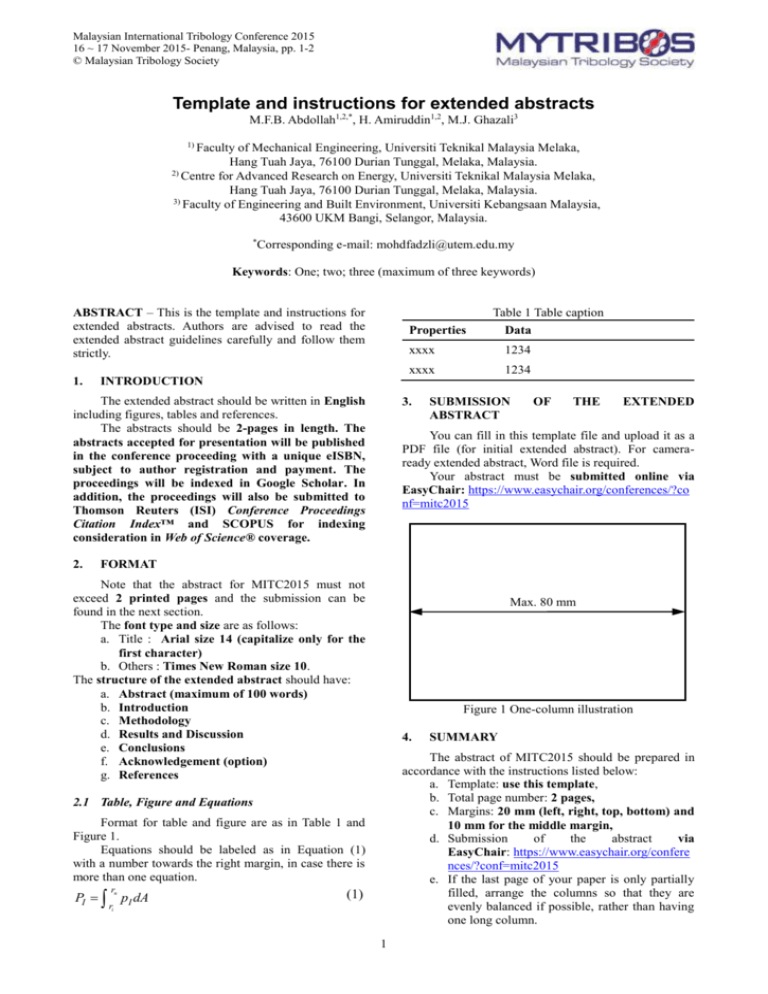
Malaysian International Tribology Conference 2015 16 ~ 17 November 2015- Penang, Malaysia, pp. 1-2 © Malaysian Tribology Society Template and instructions for extended abstracts M.F.B. Abdollah1,2,*, H. Amiruddin1,2, M.J. Ghazali3 1) Faculty of Mechanical Engineering, Universiti Teknikal Malaysia Melaka, Hang Tuah Jaya, 76100 Durian Tunggal, Melaka, Malaysia. 2) Centre for Advanced Research on Energy, Universiti Teknikal Malaysia Melaka, Hang Tuah Jaya, 76100 Durian Tunggal, Melaka, Malaysia. 3) Faculty of Engineering and Built Environment, Universiti Kebangsaan Malaysia, 43600 UKM Bangi, Selangor, Malaysia. * Corresponding e-mail: mohdfadzli@utem.edu.my Keywords: One; two; three (maximum of three keywords) ABSTRACT – This is the template and instructions for extended abstracts. Authors are advised to read the extended abstract guidelines carefully and follow them strictly. 1. Table 1 Table caption INTRODUCTION The extended abstract should be written in English including figures, tables and references. The abstracts should be 2-pages in length. The abstracts accepted for presentation will be published in the conference proceeding with a unique eISBN, subject to author registration and payment. The proceedings will be indexed in Google Scholar. In addition, the proceedings will also be submitted to Thomson Reuters (ISI) Conference Proceedings Citation Index™ and SCOPUS for indexing consideration in Web of Science® coverage. 2. Properties Data xxxx 1234 xxxx 1234 3. SUBMISSION ABSTRACT OF THE EXTENDED You can fill in this template file and upload it as a PDF file (for initial extended abstract). For cameraready extended abstract, Word file is required. Your abstract must be submitted online via EasyChair: https://www.easychair.org/conferences/?co nf=mitc2015 FORMAT Note that the abstract for MITC2015 must not exceed 2 printed pages and the submission can be found in the next section. The font type and size are as follows: a. Title : Arial size 14 (capitalize only for the first character) b. Others : Times New Roman size 10. The structure of the extended abstract should have: a. Abstract (maximum of 100 words) b. Introduction c. Methodology d. Results and Discussion e. Conclusions f. Acknowledgement (option) g. References Max. 80 mm Figure 1 One-column illustration 4. The abstract of MITC2015 should be prepared in accordance with the instructions listed below: a. Template: use this template, b. Total page number: 2 pages, c. Margins: 20 mm (left, right, top, bottom) and 10 mm for the middle margin, d. Submission of the abstract via EasyChair: https://www.easychair.org/confere nces/?conf=mitc2015 e. If the last page of your paper is only partially filled, arrange the columns so that they are evenly balanced if possible, rather than having one long column. 2.1 Table, Figure and Equations Format for table and figure are as in Table 1 and Figure 1. Equations should be labeled as in Equation (1) with a number towards the right margin, in case there is more than one equation. PI rn ri pI dA SUMMARY (1) 1 Abdollah et al., 2015 5. Format for references must be in IEEE style: SUBMISSION OF FULL-LENGTH PAPER Authors with accepted extended abstracts are encouraged to submit high quality manuscripts in one of our supporting journals (ISI/SCOPUS/Google Scholar indexed). Submission of the manuscript is totally online following the instructions of the Guide for Authors. The possibility of inclusion is very high. Links to the journal websites are provided via MITC2015 website at http://mitc2015.mytribos.org/publication.html 6. Journal articles [1] J.L. Mo, Z.G. Wang, G.X. Chen, T.M. Shao, M.H. Zhu, and Z.R. Zhou, “The effect of groovetextured surface on friction and wear and frictioninduced vibration and noise,” Wear, vol. 301, no. 1–2, pp. 671–681, 2013. Conference papers REFERENCES [2] M. Ashafi’e, M.F.B. Abdollah, N. Ismail, and H. Amiruddin, “Pre-materials selection for eco-aware lightweight friction material,” in 9th International Materials Technology Conference and Exhibition, 2014, pp. 1–4. References should be cited in the text either in: a. .... as previous study [1]. b. .... as previous study [1-4]. c. .... as previous study [2,5,7]. d. For one or two authors: “…Amiruddin and Abdollah [3] stated that ….” e. For more than two authors: “…Abdollah et al. [2] found that ….” Books [3] W. Strunk Jr, and E.B. White, The elements of style, 4th ed. New York: Longman; 2000. 2
